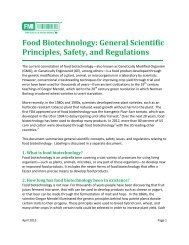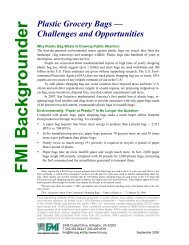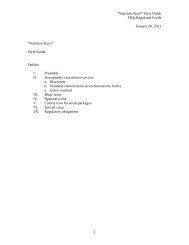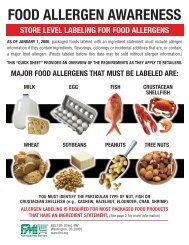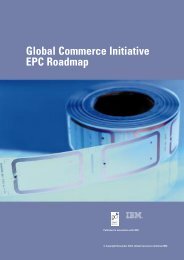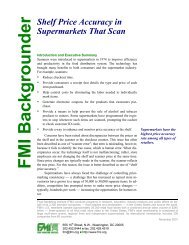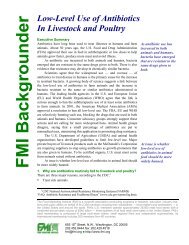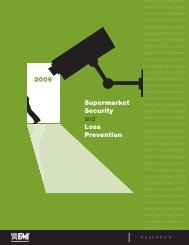Consumer Shopping Habits for Wellness and Environmentally ...
Consumer Shopping Habits for Wellness and Environmentally ...
Consumer Shopping Habits for Wellness and Environmentally ...
You also want an ePaper? Increase the reach of your titles
YUMPU automatically turns print PDFs into web optimized ePapers that Google loves.
Figure 16 – In<strong>for</strong>mation Sources<br />
Internet<br />
60%<br />
Doctor<br />
53%<br />
Online health sites<br />
44%<br />
Books/Magazines<br />
38%<br />
Family member<br />
29%<br />
Friend or colleague<br />
TV/Radio shows<br />
Pharmacist<br />
Newspapers<br />
Email newsletters<br />
Product label<br />
A product company's web site<br />
Nutritionist/Dietitian<br />
Hospital<br />
Commercials<br />
Online communities<br />
A product company's advertisement<br />
Professional medical association<br />
In-store in<strong>for</strong>mation<br />
Health club/Trainer<br />
Alternative/Complementary health practitioner<br />
Blogs<br />
21%<br />
20%<br />
16%<br />
15%<br />
14%<br />
13%<br />
11%<br />
9%<br />
9%<br />
9%<br />
8%<br />
7%<br />
6%<br />
6%<br />
5%<br />
5%<br />
5%<br />
Media<br />
Medical Professionals<br />
Personal Acquaintances<br />
Manufacturer/Retailer<br />
Q13: “In the PAST 3 MONTHS, which of the following in<strong>for</strong>mation sources have you used to learn more about health <strong>and</strong> wellness?” |<br />
Base: Primary household shoppers (n=2176). | Source: GMDC 2009 Survey, Mar. 2009.<br />
Knowledge Transfer: In<strong>for</strong>mation to Practice<br />
Beyond where consumers obtain H+W in<strong>for</strong>mation, it is essential to underst<strong>and</strong> how in<strong>for</strong>mation<br />
translates into practice. Time <strong>and</strong> again consumers report being confused <strong>and</strong> frustrated by the<br />
myriad scientific reports <strong>and</strong> product recommendations that inundate their lives. <strong>Consumer</strong>s separate<br />
the ―wheat‖ from the ―chaff‖ based largely on intuition <strong>and</strong> corroboration.<br />
<strong>Wellness</strong> in<strong>for</strong>mation that resonates on an intuitive or gut level often gets translated into intention<br />
<strong>and</strong>/or practice. For example, eating more whole grains has common sense appeal because it is<br />
obvious to consumers that more nutrition is retained by something retaining its whole state over<br />
something processed. <strong>Consumer</strong>s are also inclined to adopt a wellness product or practice when<br />
they hear corroborating evidence of its effectiveness. When a consumer hears about the power of<br />
antioxidants from her doctor, yoga instructor, an NPR broadcast, the grocery clerk <strong>and</strong> her<br />
acquaintance at the dog park, the in<strong>for</strong>mation sticks, <strong>and</strong> antioxidant consumption follows. Repeated<br />
in<strong>for</strong>mation from multiple sources often becomes practice.<br />
32




